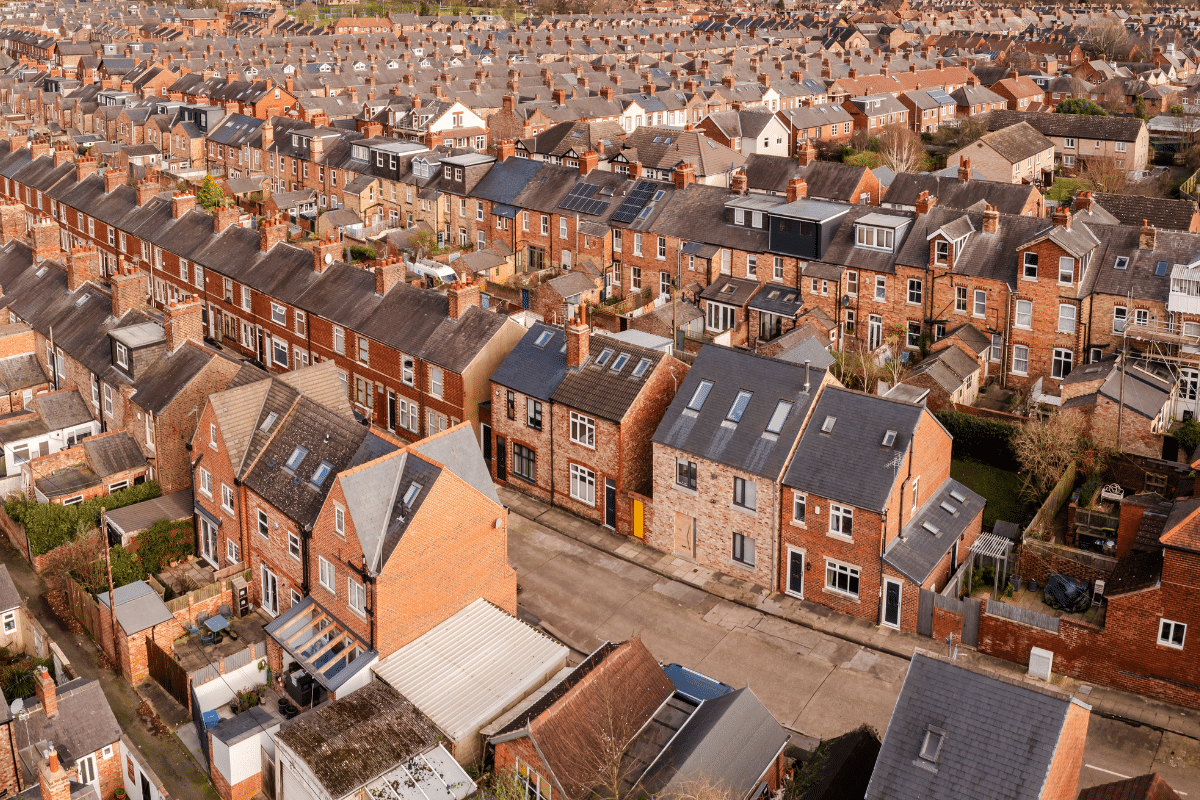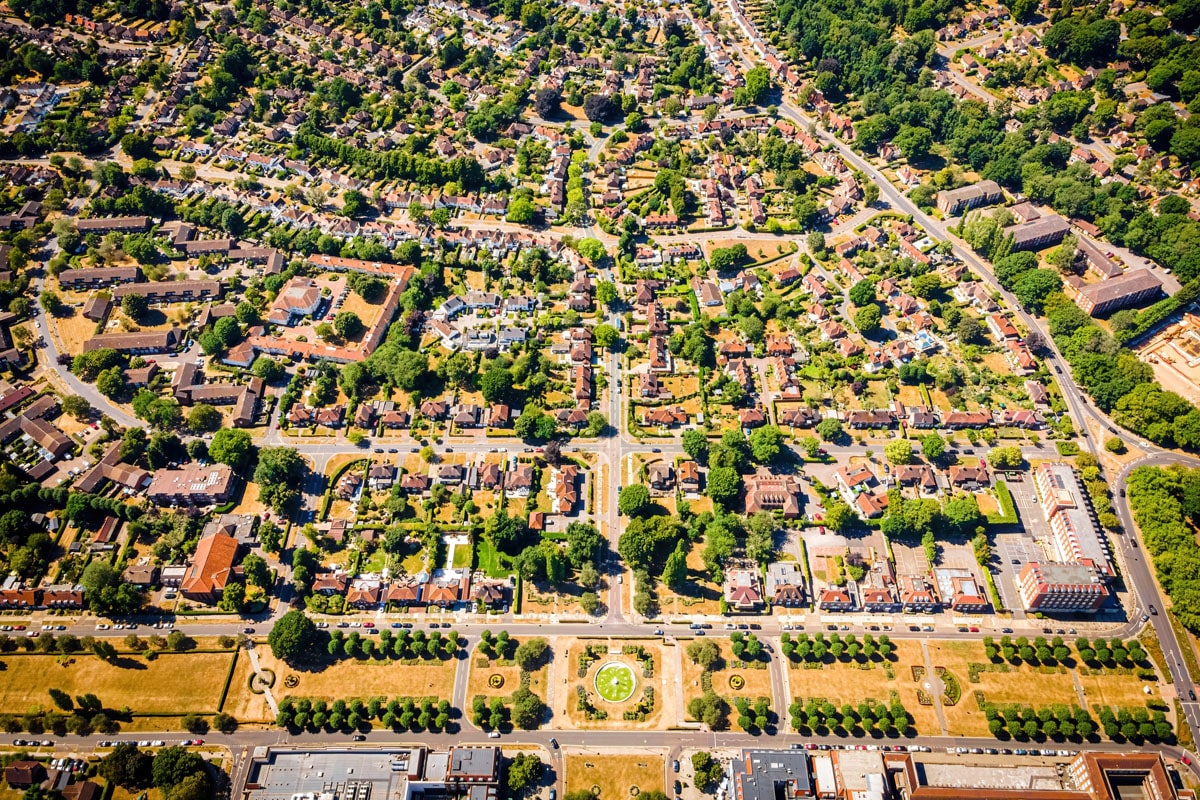What is the 18-Year Property Cycle? Where Are We Now?
The 18-year property cycle is a well-documented pattern where UK property markets go through distinct phases of boom, bust, and recovery over approximately 18 years. So, where are we in the real estate cycle now? Current analysis suggests the next major market correction could occur around 2026-2027. This comprehensive guide examines the cycle's phases, reliability, and how investors can use this knowledge for strategic planning to build a property portfolio.
Contents
- What causes property markets to boom and bust?
- What is the 18-year property cycle?
- Who identified the 18-year property cycle?
- Cycle phases
- Is the 18-year property cycle reliable?
- Becoming a more successful investor
- Where do we find ourselves now?
- When will the next property market crash be?
- What can we do about it?

-
by Robert Jones, Founder of Property Investments UK
With two decades in UK property, Rob has been investing in buy-to-let since 2005, and uses property data to develop tools for property market analysis.

Housing Market Cycles - What Causes Boom and Busts?
Free-market economies typically follow cycles influenced by macroeconomic and microeconomic factors.
Property markets tend to follow a similar path. Throughout these phases there are various rental property investment strategies that can be applied depending on where we are in the cycle.
Depending on which economist you choose to follow, you may see different phases of specific real estate cycles suggested with a range of time lines. Common property market cycles are
- 7 Years
- 10 Years
- 18 Year cycles
Even though buying at any stage can be valuable, knowing where we are in the real estate cycle and the right price to pay is critical.
Having an appreciation and understanding of capital growth, when it happens and how to check for potential capital appreciation is also crucial.
The signs of a cycle are often clearly repeated in hindsight.
The real estate cycle moves through the phases, as economies experience a number of good years, in which businesses invest and expand, where employment, wages and consumer spending rise and where the economy grows.
Inflation grows, interest rates are adjusted (increasing upwards) to counter price rises and slow consumer spending.
Eventually, a peak is reached, and a downswing occurs. As prices and inflation rise, often consumers cut back more and more , businesses scale back and employment falls. The economy may fall into recession.
Eventually, the market bottoms out, recovery begins and growth restarts.
Buyers experience a number of good years where house prices are affordable, buyers are keen to buy, banks are keen to lend and the market rises.
Gradually, demand begins to exceed the supply of property. Prices rise, often sharply. Eventually, buyers become reluctant or unable to afford the new market prices. As demand drops off prices fall and may even cause a housing crash.
After a period of recession, the bottom is reached. Property prices become attractive and affordable again and the market starts to recover.
The cycle starts again and repeats.

Access our selection of exclusive, high-yielding, off-market property deals and a personal consultant to guide you through your options.
What is the 18-Year Real Estate Cycle?
One of the most widely regarded theories of the cyclical nature of real estate is the 18-year property cycle. This suggests that property markets
- Boom for a period of around 7 years (prices rise sharply, driven by speculation and credit expansion)
- Bust for a period of around 4 years (the market corrects, often sharply and triggered by financial crisis or rising interest rates)
- Recovery for a period of around 7 years (property prices rise steadily as affordability improves and finance becomes easier)
Who Identified the 18-Year Property Cycle?
The 18-year property cycle is widely attributed to land economist Fred Harrison.
Fred Harrison outlines his theories in his books including Boom Bust: House Prices, Banking and the Depression of 2010, The Power in the Land and We Are Rent.
Fred Harrison suggests that evidence of the 18-year property cycle in the UK property market dates back around 300 years. A similar cycle also occurs in other countries.
Fred Harrison is credited with accurately predicting the 1990 and 2008 property market crashes.

Cycle Phases
Over the course of an approximately 18-year cycle, the market typically transitions through various distinct phases, each characterized by unique trends, behaviours, and economic dynamics. This continual fluctuation manifests in predictable stages, offering both opportunities and challenges to buyers, sellers, investors, and financial institutions.
Understanding exactly where we are in the real estate cycle and each of the individual phases is essential for anyone involved in the property market, whether as a homeowner, investor, or policymaker. For those starting their property investment journey, having clear property investment goals is crucial for long-term success.
It provides valuable insights into market trends and potential future movements, empowering decisions that are in tune with the inherent ebb and flow of the market. The five key phases of the property cycle, namely, The Recovery Phase, The Mid-Cycle Dip, The Boom Phase, The Winner’s Curse, and The Crash or Recessionary Phase, form a rhythm that governs the fortunes and failures of property economics.
The Recovery Phase
After the last recessionary period, the next new cycle begins with a recovery phase. The property market tends to proceed slowly at the start of the phase with prices rising only slightly. The experience of the last recession means buyers and investors are reluctant to buy, and banks are reluctant to lend.
Buyers and investors during the early recovery phase tend to be risk-takers and expert investors who often focus on finding off-market property deals during the early recovery phase. The more established property locations, such as London and the southeast, tend to enter the recovery phase first.
The recovery phase lasts for around the first seven years of the 18-year property cycle on average.
The Mid-Cycle Dip
At some point following the recovery phase, a mid-cycle dip or market correction occurs. Prices stabilise or even drop slightly. This might be because early investors finish investing, or decide to sell and take their initial gains.
A mid-cycle dip may sometimes be confused with the end of a recovery and a beginning of a recessionary period in the property market.
A mid-cycle dip may last for 1-2 years on average. After the dip property prices start to rise again.
The Boom Phase
During a property boom, sometimes called the explosive phase, confidence in the market increases dramatically. Encouraged by what they have seen in the recovery phase buyers, investors and developers are keen to become involved in the market. Banks are keen to lend money to buyers, and to lend larger amounts.
Large numbers of people see property as a good investment and/or a way to make money quickly. Homeowners see now as a good time to upsize.
First-time buyers feel pressurised to buy now before buying becomes out of their reach.
During the boom phase demand for property begins to exceed supply – particularly since the supply of land is finite – and property prices rise fast, frequently to new records. During boom phases, even traditionally reliable, most affordable and best buy-to-let locations can become overvalued.
Property booms last for around seven years on average, or approximately between years 7-14 of the 18-year property cycle.
The Winner’s Curse
The theory identifies the period towards the end of the boom as a ‘winner’s curse’.
During this period, a feel-good factor leads many people to believe the boom and bust cycle has ended for good and property prices will rise indefinitely. This is often when property investment scams become more prevalent, as investors become less cautious.
This can lead buyers and investors to pay over the odds, even though prices are becoming unsustainable.
During the boom phase demand for property begins to exceed supply – particularly since the supply of land is finite – and property prices rise fast, frequently to new records.
The House Price Crash or Recessionary Phase
The recessionary phase may begin when property prices, having risen much faster than wages, become unaffordable. Buyers cannot meet seller’s expectations. Banks are unwilling to lend at those levels.
As the crash advances, property owners who have to sell or who fall into debt have to sell at a loss. Some investors use the buy refurbish refinance model to take advantage of these lower prices during a time of market downturns. Whilst experienced investors may see the writing on the wall and decide to cut and run. The market then becomes flooded with properties, some of which no one wants or can afford to buy, causing a continuing the downturn.
The recessionary phase is the shortest phase in the 18-year property cycle. On average it lasts for around four years, or between years 14-18 of the cycle.
Once prices have readjusted and settled the 18-year property cycle begins again with a new recovery phase.
Is the 18-Year Property Cycle Reliable?
Timing any cycle is an impossible task, with many experts claiming specific dates for the next boom and bust and even those with impressive track records missing key dates.
However looking at the last few decades, there is some evidence to suggest that the 18-year theory has some validity:
- UK property prices experienced an upswing in the 1950s as more people wanted and were able to afford to buy. A mid-cycle dip occurred in the early 1960s. Prices then accelerated during the 1960s before slowing at the end of the decade.
- In the 1970s the market rose before suffering a dip in the early 1980s. The 1980s saw a property (and economic) boom before prices crashed from around 1990 onwards.
- The market began a recovery around 1993 and gained momentum throughout the decade before a price correction around the new millennium. Prices boomed in the mid-late 2000s before the 2008 financial crisis and a subsequent market crash.
But does this mean the next recession is around the corner in 2026?
Becoming a More Successful Investor
Timing the market isn't realistic, nor is it a strategy you can rely on. However, like all the best investors, you can follow some key principles and look at historic and recent real estate crashes and booms for clues.
- You can invest in the property market with more certainty and confidence knowing that it is cyclical. Prices will always rise, fall and rise again. Progress on the cycle is a matter of ‘when’ not ‘if’. Losses are a normal part of investing, as are gains.
- You can plan your investing by looking for clues as to progress through each phase of the cycle. Thorough property due diligence becomes even more critical when investing at different points in the cycle. For example, are prices rising quickly or slowly? Are the buyers who are currently active in the market mainly 'risk takers' …. or are they ordinary consumers desperate to buy?
- The 18-year cycle tends to show that property investors make a gain in the long term. It is invariably the case that the low point of property prices in each new cycle is always higher than the low point of the previous cycle. It is argued that this always occurs due to the supply of land being finite and populations increasing.
- The cycle can indicate when the best time to buy an investment property is, ie. at the bottom (or near the bottom) of the cycle. This is when raising property finance can often be more challenging but potentially more rewarding.
- It can indicate when the best time to sell property is, ie. at the top (or near the top) of the cycle.
- It can indicate when the best times to avoid buying and selling a rental property are … and when it is best to bide your time and do nothing.

Where Do We Find Ourselves Now?
The 18-year property cycle only becomes truly useful when you can see how it might apply to the current property market. So let’s look at recent times.
Starting in 2000 UK property prices rose fast for the following decade, reaching an average of around £186,000 at the start of 2008. Following the financial crisis of the time average prices then crashed – by 17% on average – reaching a low of £154,000 in March 2009.
Prices then began a slow recovery – the early 2008 average house price of £186,000 was not reached again until spring 2014. Prices then continued on an upward trajectory with a mid-market dip occurring in 2018 and 2019 – the average property price of £231,000 during the summer 2018 fell slightly over the coming months and only returned to £231,000 at the end of 2019.
Prices began to accelerate rapidly in 2020 (even though many experts felt Covid would interrupt the cycle) and this continued throughout 2021 and 2022. The property market boomed, with more buyers than sellers and properties sometimes selling within days. Average prices reached record levels of around £238,000 in the summer of 2020, £260,000 in the summer of 2021 and £290,000 approximately during the summer of 2022.
By the end of December 2023 the latest data from the Office of National Statistics show the average house price was £285,000.
So does this represent the ‘winner’s curse’ period of the 18-year property cycle?
The honest answer is nobody really knows.
It might suggest that buyers are still prepared to pay as much as during the current boom years even though market conditions have weakened as the cost of finance remains higher than the a few years ago.
When Will the Next UK Property Market Crash Be?
It is very important to recognise that the 18-year cycle periods are averages.
Each cycle and the phases within it may be slightly longer or shorter than the theory suggests.
With influences from growing populations (increasing demand), improvements in building technology (reducing build costs) and a new culture of work from home (less need to live in major cities for high paying careers), there are many reasons that can see UK house prices continue to trend up past this 18 year housing cycle theory.
However, if the theory of the 18-year property cycle is to hold true yet again, it might suggest that based on the last crash and recovery being around 2008-2009 the next property market crash should occur around 2026-2027. This could see four years of property market recession before another recovery begins in the early 2030s.
What Can We Do About It?
It is also important to remember that, despite its past track record, the 18-year property cycle is a theory not fact.
It is not some immutable law and indeed it may not happen again at all.
While it may be a useful guide it isn’t safe to invest purely on the basis of the 18-year property cycle and rather than timing the market, the best investors plan ahead and ensure they can buy property and build a portfolio at any stage of the economic cycle. By focusing on key principles and having a real estate investment checklist by their side.
